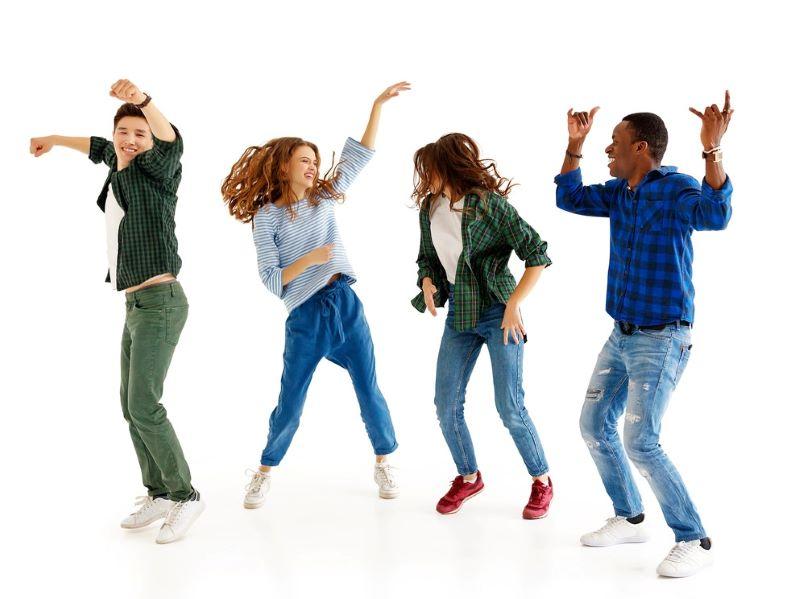
Why and how to bring physical movement into the classroom

Education continually seeks to enhance the student learning experience. However, whether at school, college or university, most of these experiences are spent sitting down. A growing body of research points to the benefits of incorporating movement in the classroom as a way to expand students’ experiences.
Being sedentary in class directly impacts mental and cognitive functions as well as students’ experiences, academic performance and behaviours, research shows. After 15 to 20 minutes of sitting, attention is lost and 90 per cent of the oxygen in the brain and body becomes stale, reducing the amount of glucose available to the brain, studies suggest. Meanwhile, neurotransmitters that carry messages from one nerve cell to the next start to down-regulate their production.
- Looking after well-being in higher education
- Embodied learning: how to bring movement into the classroom, and why it matters
- Take your online teaching outside
This reduction of usable glucose along with nerve conduction is a red flag for brain functions, resulting in potential fatigue, brain fog, attention deficit and classroom behaviour issues among students.
Teachers may witness an outward change in their students’ behaviour because of these symptoms. They may see students become tired or seemingly lazy, unable to retain information, fidgeting, disengaged, disinclined to participate, disruptive, tardy and skipping lessons.
While some teachers do incorporate movement into their classrooms, evidence suggests that uncertainties and concerns prevent many others from doing the same. Therefore, two questions need answering:
What are the unknowns that prevent teachers from incorporating movement into their classrooms?
- When should I carry out the movements?
- How long should I carry out the movement?
- What type of movement should I do?
- Where should I carry out the movement?
- What can I do if I have no experience in movement in the classroom?
What strategies can be offered to those teachers who are unsure how to incorporate movement into the classroom?
1. Every 15 to 20 minutes, all students and teachers should carry out some form of movement, irrespective of whether they have been seated or standing. This will boost the supply of fresh oxygen and glucose to the brain, allowing the nervous system to rebalance itself and prevent fatigue.
2. The amount of time to carry out movement can vary depending on the time the teacher has and the length of the lesson. However, research suggests that five minutes of physical movement – called movement breaks – is enough to support healthy brain functions.
3. The most productive physical movements are yoga postures in the form of stretching and aerobic movements in the form of walking, jumping or marching, research suggests. It is also important to identify movements that are suitable for your students. For example, do any of your students have any physical or cognitive additional needs? Knowing your students’ needs can be achieved by a brief questionnaire given at different points of the academic year.
4. Movement can be carried out in any location the teacher decides, be this inside or outside the classroom; however, standing behind the student’s chair is plenty of space. It is best to assess the class size and structure first, looking at the layout, chairs and tables – for example, are the chairs and table movable? This will allow you to choose physical movements that are suitable for the space you are in.
5. Further tips for those with no experience in classroom movement breaks include:
- Researching “physical movement breaks” and becoming familiar with different types that can be easily used in the classroom can make it easier for the teacher to implement. There are apps and videos offering guided movement, which teachers and students can watch and follow via a screen. To make it more game-like, there are physical movement cards, dice and PowerPoint movement wheels that can be used.
- Explain the benefits of movement in the classroom to your students, and allow them to offer input on what they would like to see and do in movement breaks.
- If concerns arise about the movement breaks distracting from instructional time, consider incorporating topic-relevant movements in the form of games. For example, when carrying out a question-and-answer section of the lesson, if a student gets the right answer, they do five squats and if they get it wrong, they do five-star jumps.
The creativity of how movement can be used is limitless. It is a simple way of giving students a great experience in the classroom. My message to all educators is to experiment with movement in the classroom, have fun and see the benefits first-hand.
Stephen Braybrook is a movement expert, author of The Evolution of Biomechanics and creator of Brain Move.
If you would like advice and insight from academics and university staff delivered direct to your inbox each week, sign up for the Campus newsletter.


